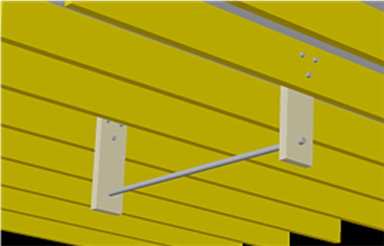The Reign of King Mob
After listening to seven lectures from “The Conservative Tradition” I have a much better understanding of what a conservative is and how our present understanding of conservative philosophy developed. While in the first lecture, Prof Allit explained that those holding conservative philosophies hold different beliefs in different periods of history, I didn’t really understand this until I could observe the United States in the early years. At this point, I would define conservatism as a philosophy which is skeptical of blueprints for society and aware of the fallen nature of all people.
For one, it was very interesting that many founding fathers (Adams, Washington, Hamilton) were very distrustful of democracy and were merely trying to restore rights to the American People that were only recently removed by King George’s radical interventions which were depriving them of their basic liberties earned in the Glorious Revolution one hundred years before. They were inspired by and idolized the austere classical heroism of Cato and Cincinnatus. While Thomas Jefferson was focused on the power of the people and placed special emphasis on the yeoman farmer, many of the founding fathers feared giving power to commoners and created a representative system of checks and balances. Their eyes were wide open regarding human nature — and they attempted to build a government around this realization. They also kept a careful ear on accumulated political wisdom of the ages and considered government a necessary evil, not an inherent force for good.
This set the stage for understanding conservativism in the years before the civil war — from both a northern and southern perspective, with the natural question of where my beliefs would have fit in the climate that proceeded the deaths of 620,000 men. Lincoln is a true hero of mine, as is Daniel Webster, and both had a strong love for the union and support for free enterprise. However, Lincoln believed in a strong federal government, while I tend to wish more decisions were deferred to the local level (state or city). Southern conservatives, also loved their society and deplored the conditions for northern factory workers, with their inhumane “free labor” impinging on their stable way of life and their vision of a balanced society where honor had sacred meaning (heavily influenced by Sir Walter Scott). In any case, this time period might be one of the best for understanding such a complex term as conservative.
In roughly the same time frame, Andrew Jackson is introduced. The first populist president, many commentators have been comparing President Obama to this “American Lion”. However, conservatives at the time were terrified at this “Jacobin” president, who vetoed the National Bank’s charter, bringing disaster to the economy under the name of ideology. In my mind they did have much to fear. In a desire to be loved by the people, Jackson totally ignored the Supreme Court (“let [John Marshall] enforce it”) to commit one of the worst acts of genocide in history in the trail of tears. (Undertaken essentially to clear the indians from northern Georgia where gold had been discovered.) Jackson’s willingness to radically change society made him anything but a conservative, but there is something more here that gave me a hint on where I personally stand. Namely, the need for virtuous leaders who derive their morality from within — not from a desire to represent the people. Think of the untold evil done by corporations to “please their shareholders” as a small example of the perils of emphasis on pleasing others instead of one’s internal conscience.
I would not have voted for Jackson (Henry Clay would have been my pick over John Calhoun) and I found that, for me, it comes to this: moral understanding, with wisdom and a correct understanding of the nature of man’s fallen state. Jackson was a blood-thirsty general whose morality was based on the victory of the strong, the will of the people, and the preservation of sacred honor. My heros: men like Churchill, Lincoln, Cicero, or Cato — are men of profound moral understanding and consuming passion. One can certainly be moral and feckless (maybe Carter), but I think my criteria for my political philosophy is starting to come into place. I feel this is a good start. Any thoughts?

 ,
,
